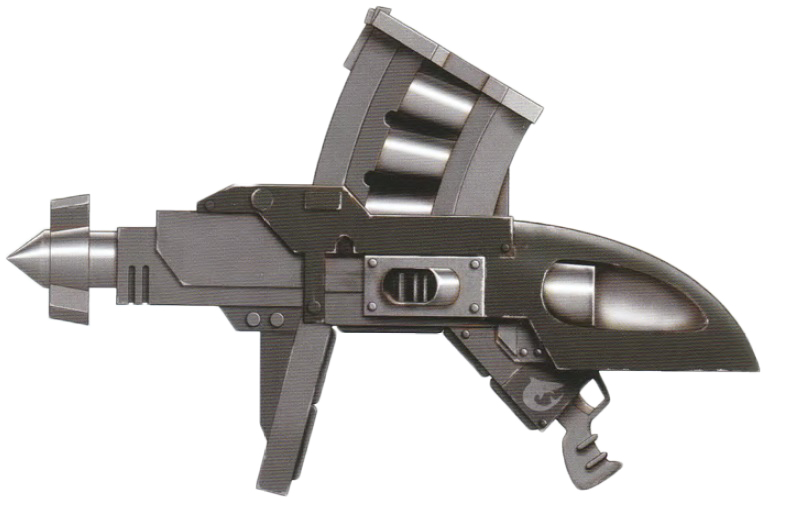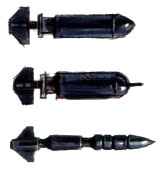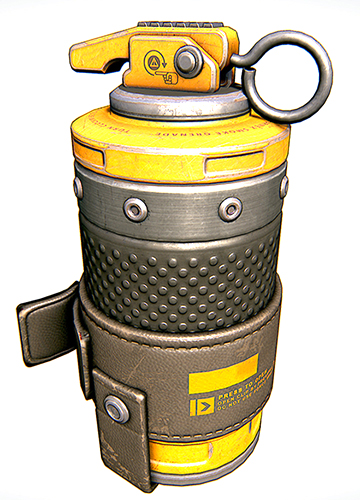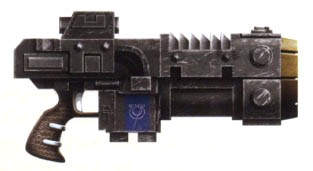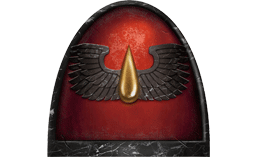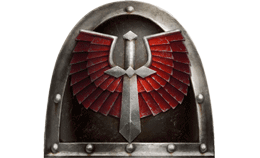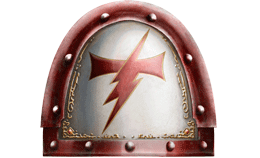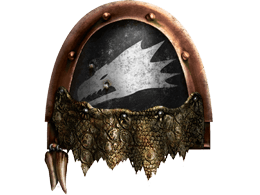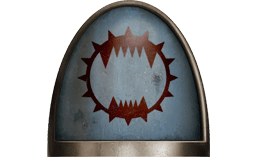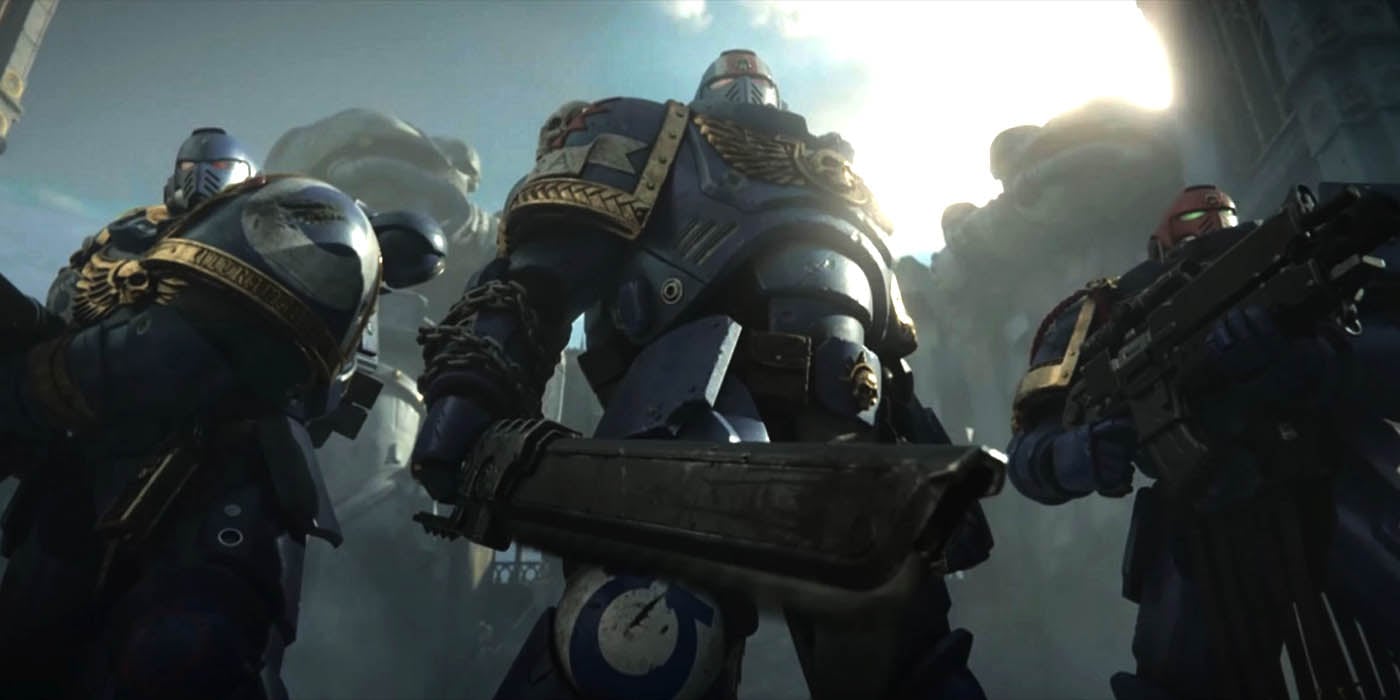Warhammer 40K: Space Marine Destroyers, the True Angels of Death
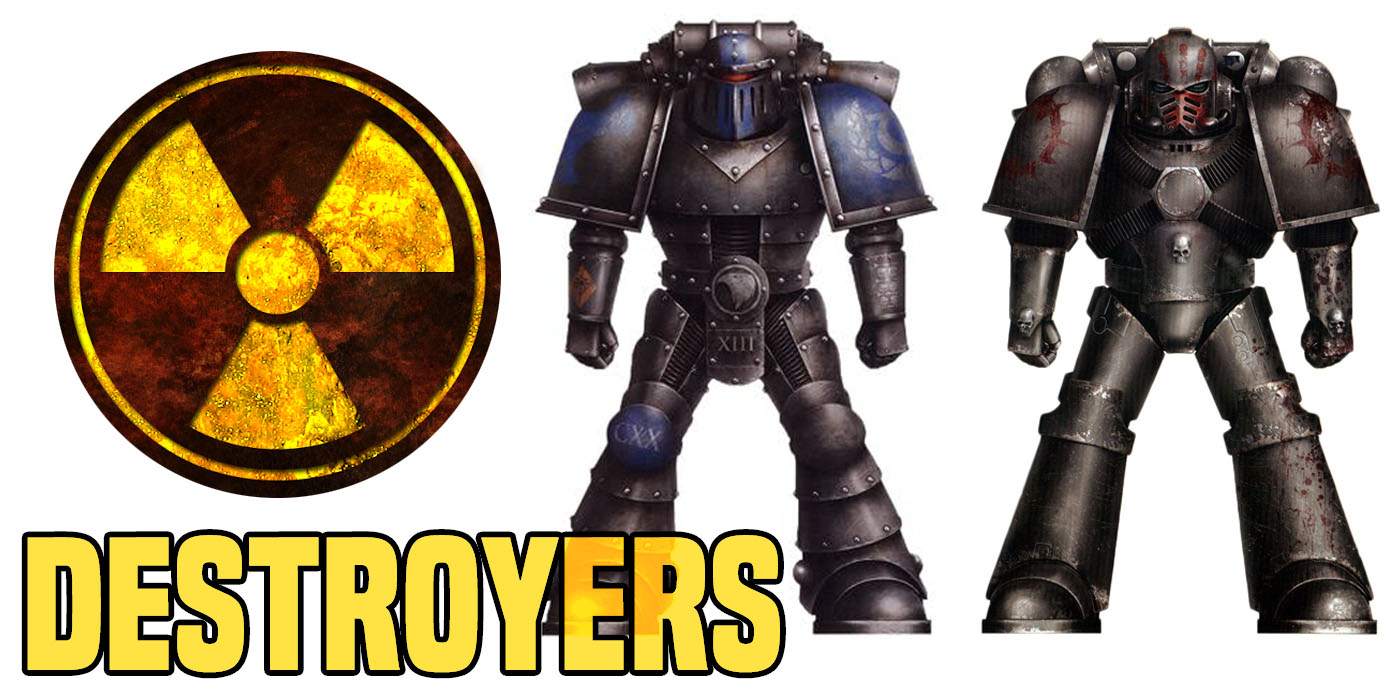
Learn of one of the darkest, blight-ridden tools of the Adeptus Astartes, the sinister Space Marine Destroyers, and their forbidden weaponry.
Destroyers
Space Marine Destroyers were a type of elite Space Marine squad employed during the Great Crusade and Horus Heresy.
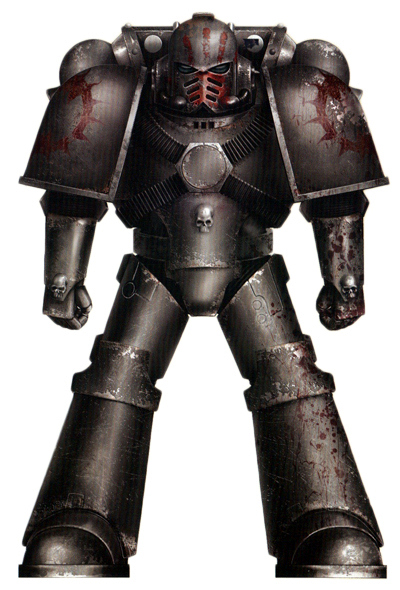 World Eaters Destroyer in Mk.IV Maximus armor.
World Eaters Destroyer in Mk.IV Maximus armor.
Equipped with otherwise forbidden or proscribed weaponry from the Age of Strife such as radioactive, biological, or other horrific methods of death, Space Marine destroyers were often shunned or seem as dishonorable by their Legion counterparts. However, due to their combat effectiveness, they were considered a necessary evil by Imperial commanders.
Led by a Space Marine Sergeant, Destroyer Squads were most typically equipped with Missile Launchers armed with Rad Missiles or Volkite Serpenta. They also commonly carried Phosphex Bombs, Rad Grenades, and Melta bombs. To better rain death upon their foes, they were sometimes equipped with Jump Packs.
Forbidden Weapons
Rad Missiles
Rad Missiles were a type of Rad Weapon deployed during the Great Crusade and Horus Heresy. These Terran-derived missiles are a horror of the genetic wars waged during the Age of Strife, using custom loaded-warheads which combine high explosive fragmentation charges lined with radioactive isotopes. The effect is to create an intensely toxic radiation weapon that inflicts a hideous death on its victim no matter their resilience. Because of its contaminating and hideous nature, it was deployed sparingly, most commonly by Destroyer Space Marines.
Phosphex Bombs
Phosphex Bombs are deadly Phosphex Weapons used during the Great Crusade and Horus Heresy.
These bombs contain phosphex, a rare corrosive toxin, and incendiary compound. It expands on contact with the air into a seething, liquid mist which burns with an eerie white-green flame that is attracted to movement. This flame ignites metal and eats into living tissue, and more ominously can not be extinguished by any means short of exposure to a vacuum. But as effective as this horrific weapon is, its use is not widespread as it has a tainting effect on planets beyond even radiation or nuclear weapons. Thus they were only sparsely deployed by Destroyer Space Marines or in Imperial Army Medusa‘s, where they were known as Phosphex Shells.
Rad Grenades
Rad Grenades are weapons utilized by Inquisitors of the Ordo Xenos or Space Marines. Rad grenades detonate in a shower of tiny, radioactively-contaminated fragments. Each particle’s radioactive emissions have a millisecond half-life, ensuring that the thrower can charge in without exposing himself to contamination. Nevertheless, those enemies caught in the initial blast will feel the rad grenade’s debilitating influence for some time afterward.
Volkite Serpenta
Volkite Serpenta – Pistol version of the Volkite family.
Volkite weapons are a Mechanicum term for a type of ancient thermal ray weapon dating back to the Age of Strife.
Possessing a killing power surpassing most armaments of their size, Volkites were little-understood and difficult to replicate on even the most capable Mechanicus Forge Worlds. Volkite weapons could Deflagrate organic matter, explosively burning flesh into ash and jetting fire. A direct hit by a Volkite weapon could cause a target to simply combust, often taking nearby comrades with them.
At one point they were relatively common in the fledgling Space Marine Legions, but by the time of the Horus Heresy were a rarity and had been replaced by the more flexible and easy to manufacture bolter. The loss of Forge Worlds during The Horus Heresy sped the decline of Volkite weapons in the Imperium.
Telerac pattern weapons are far more ancient and ill-omened than even those designated ‘Proteus’, the name implying dark associations with the technological horrors of the Age of Strife. The shortage of reliable supplies of Volkite weaponry saw many Telerac pattern weapons restored to service, and carefully maintained in the Space Marine armories.
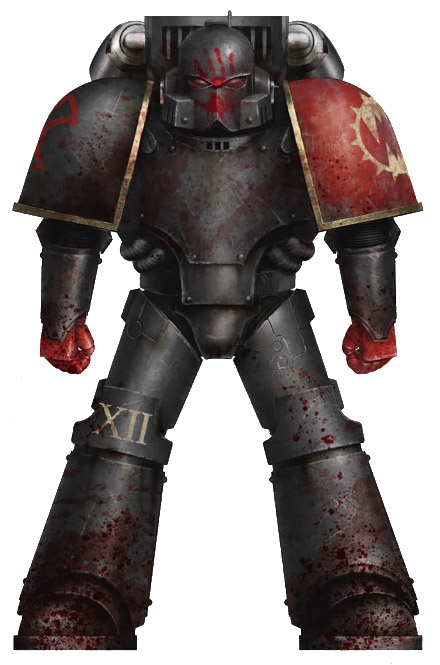 World Eaters “Red Hand” Destroyer.
World Eaters “Red Hand” Destroyer.
Notable Destroyer Formations
Angel’s Tears – Blood Angels Legion
The Angel’s Tears, also known as the Erelim, Broken Blade, Silver Masks, or Dead Hand, were warriors of the Blood Angels during the Great Crusade and Horus Heresy.
These Jump Pack-equipped infantry were known for the cruel devastation that they brought to the foe. Each individual warrior bore the title Erelim and served as Sanguinius‘ wrath set forth by his will to scour away those he decreed unworthy of being saved. They were among the most commonly seen warriors of the Innermost “Sphere” of the Legion, serving the role other Legions refer to as Destroyers. Befitting their dark duty, they wore silver death masks etched with oaths of retribution. As with the other warriors of the First “Sphere” of the Blood Angels, such as the Sanguinary Guard and Crimson Paladins, the Angel’s Tears forsook their old names and identities and took up new ritual titles, symbolic of their new roles as true Angels of Death. Angel’s Tears were said to eventually return to normal Legion service, removing their death masks and taking up their old names. This was to distance them from the death and slaughter they caused while in service as the Angel’s Tears.
The Angel’s Tears took to the field only at the direct order of Sanguinius himself, only when the complete destruction of an enemy was deemed necessary. They were armed with a variety of taboo and exotic weapons such as Phosphex Grenades, Volkite Serpentas, and Rad Grenade Launchers.
Dreadwing – Dark Angels Legion
The Dreadwing was one of the six specialized formations called Wings of the Dark Angels Space Marine Legion during the Great Crusade and Horus Heresy.
The specialty of Dreadwing was total warfare where the voted-lieutenant bearing title Dreadbringer used Interemptor Squads supported by other types of squads to bring total annihilation of a foe on specific battlefield. The Dreadwing also utilized mass armored assaults of Land Raiders, Spartan Assault Carriers, Mastodons, Whirlwinds, Vindicators, Arquitor Bombards and Fellglaives with advanced Warp weaponry. They were also known to employ weapons of mass destruction such as Phosphex and Vortex Weapons. The advanced weaponry of the Dreadwing was designed by the Emperor‘s own armorers.
Their logo was described as a skull in an hourglass design. As of M41, the unit no longer exists.
Karaoghlanlar – White Scars Legion
The Karaoghlanlar, translated from Chogorian as the Dark Sons of Death, were a formation of the White Scars during the Great Crusade and Horus Heresy. The Karaoghlanlar consisted of squads similar to that of Legion Destroyers and answered directly to the council of Stormseers. They were deployed in combat when the utter annihilation of the enemy was required, as well as for certain ritual roles during key campaigns
Pyroclasts – Salamanders Legion
Shunning conventional Destroyer units within his legion (save a small force for Xenos extermination operations) due to the unclean and tainted nature of the weapons they wield, Vulkan instead created the Pyroclasts and gave them powerful thermal-incendiary weapons of his own creation, the Pyroclast Flame Projector. To the Salamanders fire itself has almost a mystical function and truth, embodying purity, rebirth, and redemption. But for the renewal to occur, what has gone before must be purged by fire. The Pyroclasts embody the last concept faithfully.
Pyroclasts wore Mantles of Ash, finely wrought artificer plates fashioned with flecks of obsidiax crystal from the volcanoes of Nocturne and draped with the hides of the Damen-Salamanders who dwelt within their fiery depths. This gave them added protection against flame weapons
Red Hand – World Eaters Legion
Only those Destroyers who bore the World Eaters‘ Blood Hand on their power armor could have the right to enter its ranks. This mark was earned by those who had demonstrated exemplary ferocity or violence in the name of their Legion. In battle, the Red Hand were consistently in the World Eaters’ vanguard, as they sought to prove themselves ever-worthy of bearing the Blood Hand. This led them to fire their Destroyer weaponry at their foes, even if their fellow World Eaters would be caught in the blast. Thus the Red Hand were not drawn together through brotherhood or camaraderie, but instead through rivalry and enmity. As the Horus Heresy developed, they were always found in the vanguard, reaping a bloody toll and dressing themselves in gory embellishments.
In battle, they could be equipped with Jump Packs and carried melee weapons, that were reminiscent of the ritualistic gladiatorial weapons of ancient Romanii. Also as a result of their Destroyer weaponry which included Phosphex, Melta, and Radiation Grenades, the Red Hand’s power armors were left heavily damaged, though were also still operational. When they were grouped in squadrons, the Red Hand were individually referred to as Ravagers and were led by officers known as the Blood Bonded.
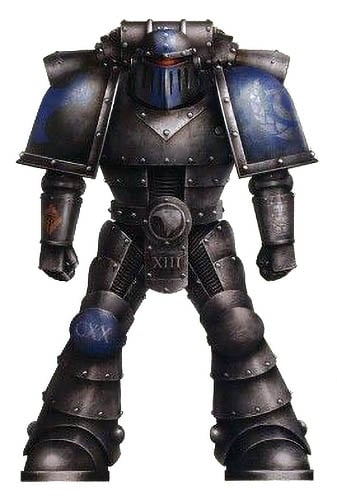 Ultramarines Destroyer in Mk.II Crusade armor.
Ultramarines Destroyer in Mk.II Crusade armor.
~Perhaps it is best for the galaxy that such horrors were lost to the flames of the Heresy.

